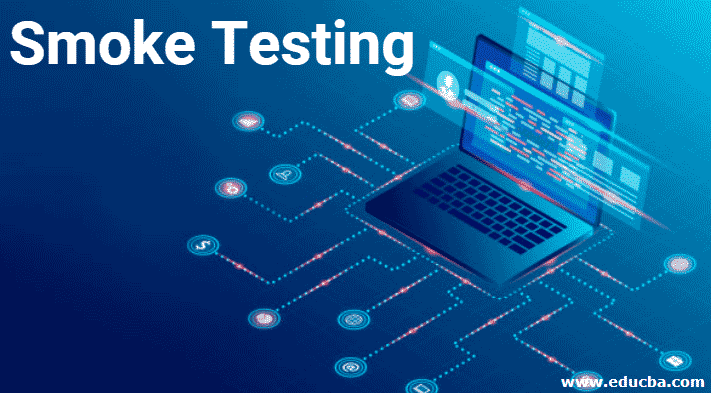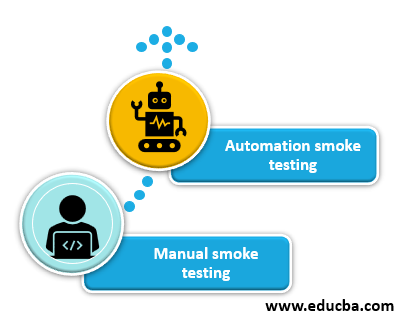Updated March 18, 2023
What is Smoke Testing?
Smoke Testing is the type of testing methods that falls under the category of verification, as it is used to test and confirm the working of the application in terms of the build. This testing is performed in the beginning of the testing process, so as to make sure all the major blocks are functionally active and there are no blockers for the testers to work on functional testing.
Why do we Need Smoke Testing?
This testing is usually performed in the starting/ initial stages of the software applications when the software is released for the testing of the QA team. Consider a scenario of an eCommerce application, when the software build is deployed on the test environment for testing but during testing it is found that user is not able to log in the application to proceed further and perform any task or we can say that user is blocked to use the application as the very first step of logging is not working.
There is no use to perform exhaustive and detailed testing of other modules if the critical functionality is not working fine. To handle these types of situations, such testing is performed as it helps to reduce the time and efforts of the testing team wasted on the detailed testing if the build is not stable enough to perform testing.
Some of the key reasons why this testing is performed are given below:
- It helps to find the major issues in the application in the starting only.
- It helps to reduce the time and efforts of the QA team that could be wasted if the build is not stable.
- It helps in the early identification of defects.
- It helps to find the stability of software applications.
Smoke Testing Techniques
It is usually performed either manually or through automation, techniques depending on the type of project and the organization’s policies.
1. Manual Smoke Testing
Generally, it is performed manually in order to find that the critical functionalities of the software application are working fine. Manual testing is like the General Health Checkup and uncovers the high quality and critical bugs in the initial stages of software testing by quickly go through the application. It is done manually by executing a limited number of test cases in order to find the stability of an application if it is ready to proceed further for exhaustive testing.
2. Automation Smoke Testing
It is a part of Regression testing and now the testers automate the test cases before the build is released to the testing team. Test cases can be automated using various automation frameworks available in the market. Automated test cases are very helpful as they help in reducing the manual efforts of the testing team every time the new build is released. Once the test cases for the smoke tests are automated, QA teams run the job having the automated test suite providing speedy results without any manual intervention to find the stability of an application.
How does Smoke Testing Works?
Let’s see the working of Smoke testing through step by step procedure:
- Once the software build is ready, it is deployed for testing (on a test environment) to the QA team.
- On receiving the software build, the testing team creates the test cases according to the requirements in order to check the stability of the build.
- Only the important and critical test cases created are now executed by the testing team either manually or through automation scripts.
- After the execution of test scripts on the test environment, it is decided whether the build is stable enough to move towards the functional or more rigorous testing or if the build fails, it is considered to be unstable and hence reverted back to the developers and no further testing is carried out on that build.
Advantages and Disadvantages of Smoke Testing
Given below are some advantages and disadvantages mentioned:
Advantages:
- One of the biggest advantages of smoke testing is that it helps in the early identification of the defects found in the critical functionalities of the system.
- Smoke testing helps in reducing the risk of failure as the defects are found early.
- Smoke testing is quite easy to perform as no special efforts of the testing team are required.
- Smoke testing helps in saving the time and efforts of the testing team.
- It helps in the overall improvement of the quality of software applications.
- It needs only a limited number of test cases to be executed covering mostly positive scenarios.
- Smoke testing also helps in the conformation of requirements as mentioned in the SRS.
Disadvantages:
- Proper documentation is required in the case of smoke testing so a specialized testing team is required for that.
- Smoke testing sometimes causes a wastage of time if the software build is not stable.
- In case of some minor changes in the application, performing the smoke testing around the whole application from end to end is not worthy.
- Sometimes even after smoke testing of the whole application, critical issues arise in integration and system testing.
- Any bug/ issue left in smoke testing can cause blunders in the future.
- In any software project, time is directly proportional to cost and smoke testing is fully scripted so special manpower is needed which in turn increases the project budget.
Conclusion
The above description clearly explains what is smoke testing and why is it performed. Before releasing any software application to the end-users, various types of testing are performed at different points. It is one of the most important types of testing and has a straightforward and simple motive of finding defects in the early stages in order to verify that the critical functionalities of the software are working fine. It is a subset of acceptance testing and can be done by both testers or developers.
Recommended Articles
This has been a guide to Smoke Testing. Here we discuss why we need smoke techniques, advantages and disadvantages respectively. You may also have a look at the following articles to learn more-


